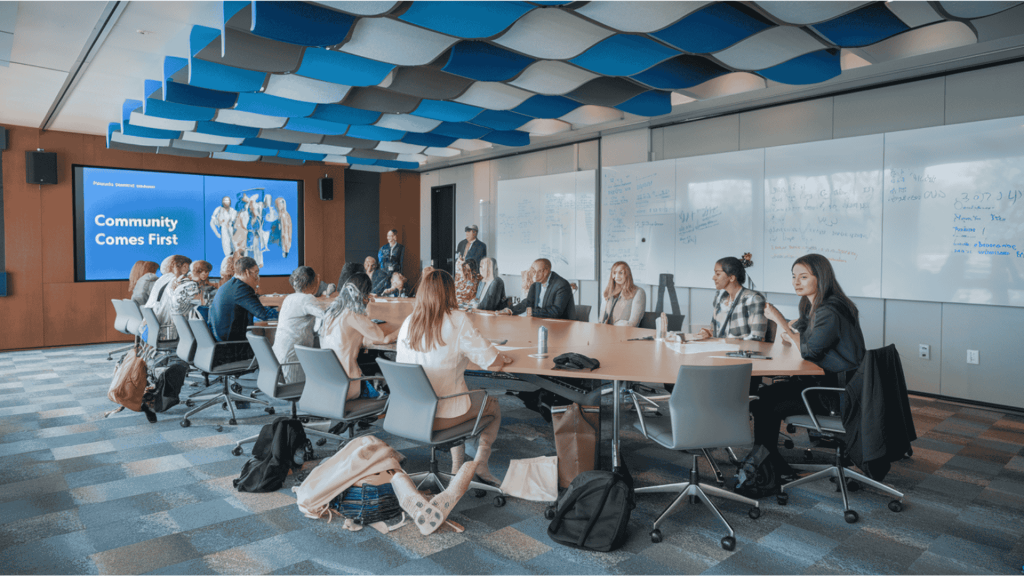Ever wonder who decides what your kids learn in school? Local school boards hold more power over your child’s education than you might think. These elected groups shape everything from classroom curriculum to school budgets.
Many parents feel disconnected from education decisions. They worry about test scores, safety, and whether their voice matters. The good news? School boards exist to represent the values of you and your community.
In this blog, I’ll explain exactly how local school boards operate and why they are so important.
You’ll learn what these boards actually do, how their choices affect your daily life, and simple ways to get involved.
What Is a Local School Board?
A local school board is a group of elected community members who govern public schools in a specific area. Most boards have 5-9 members who serve without pay for 3-4 year terms.
These aren’t education experts or politicians. They’re regular people from your neighborhood. Think parents, business owners, retirees, and community volunteers. What unites them? A commitment to improving local schools.
How School Boards Differ From Superintendents
People often confuse school boards with superintendents. Here’s how their roles differ:
| School Board Members | Superintendent |
|---|---|
| Role: Set policies, approve budgets, and provide community oversight of schools | Role: Manages day-to-day school operations, hires staff, and implements board policies |
| Selection: Elected directly by community voters every 3 to 4 years | Selection: Hired by the school board through an interview process, serves at the board’s discretion |
| Time: Volunteer position requiring 10 to 15 hours monthly for meetings and duties | Time: Full-time professional job with an education administration background |
| Background: Regular community members – parents, business owners, retirees | Background: Trained education professional with advanced degrees and administrative experience |
Both roles work together to ensure schools run smoothly and serve students effectively. The board sets the vision while the superintendent makes it happen day by day.
Key Responsibilities of School Boards
School boards wear many hats. Their primary responsibility is ensuring that schools serve students and families effectively. Here are their biggest responsibilities:
1. Budget and Finance: Approve the annual school budget, set property tax rates for schools, and decide how to spend state and federal funding.
2. Policy Making: Create rules for student behavior and discipline, set graduation requirements, and establish hiring practices for teachers and staff.
3. Curriculum Oversight: Choose textbooks and learning materials, approve new courses and programs, and set standards for student achievement.
4. Community Leadership: Conduct public meetings to gather parent input, address community concerns about schools, and collaborate with local government and organizations.
How School Board Decisions Affect Your Community
School board choices ripple through your entire community in surprising ways. Their decisions don’t just stay in classrooms.
Your Property Taxes: School boards set local education budgets. Since schools get funding from property taxes, board spending decisions directly affect your tax bill.
Home Values: Good schools boost neighborhood property values. When school boards improve test scores, upgrade facilities, or add popular programs, homes become more desirable.
Local Economy: Strong schools attract families and businesses to communities. School board decisions regarding programs, facilities, and teacher quality significantly impact your area’s economic future.
These impacts demonstrate why staying involved in school board decisions is important for everyone in the community, not just parents with children in school.
School Board Meetings: What to Know

Want to see democracy in action? Attend a school board meeting. Most boards meet monthly and welcome public participation.
1. Before You Go
Do your homework before attending your first meeting. Check the board’s website for meeting dates and agendas, then read any background materials on key issues.
Prepare your questions or comments in advance and consider bringing a friend or neighbor for support – it makes the experience less intimidating.
2. What to Expect
School board meetings typically last 1 to 3 hours and follow formal procedures similar to city council meetings. Most include public comment periods, during which community members can share their thoughts with board members.
You’ll watch board members discuss various issues, ask questions of staff, and vote on policies that affect local schools.
3. How to Make Your Voice Heard
Sign up to speak during the public comment period, usually at the beginning or end of meetings. Keep your remarks to 3 to 5 minutes, as most boards have strict time limits for speakers.
Be respectful but clear about your concerns, and don’t hesitate to follow up with individual board members after the meeting if you need more detailed discussion.
Running for School Board: Become the Change

Thinking about running for the school board? It’s easier than you might think. No special qualifications required, just a desire to serve your community.
Basic Requirements: Must live in the school district, usually must be at least 18 years old, cannot be a current school employee, and must register as a candidate by specific deadlines.
Campaign Basics: Begin by attending current board meetings, engaging with community groups on education issues, utilizing social media to share your vision, and knocking on doors to meet voters in person.
Time Commitment: Monthly board meetings (2 to 4 hours), committee meetings and school events, reading reports and staying informed, and responding to community questions.
While the role demands time and commitment, it offers a direct path to strengthening schools and making them more responsive to local needs.
Common Challenges Facing School Boards Today
Modern school boards face complex issues that previous generations have never encountered. Understanding these challenges helps you engage more effectively.
Funding Pressures
School boards struggle with rising costs for technology, security systems, and special needs services that weren’t budget items decades ago.
Many districts also deal with aging school buildings that need expensive repairs or complete replacement.
Board members must balance competing spending priorities while maintaining high education quality and keeping property taxes affordable for families.
Political Tensions
Today’s school boards handle heated curriculum debates over topics like history, science, and social issues that divide communities.
Many boards also faced intense disagreements about COVID-19 policies and safety responses during the pandemic.
Board members work hard to balance diverse community viewpoints while managing heated public meetings and criticism on social media platforms.
Technology Integration
Keeping up with rapidly changing educational technology poses ongoing challenges for school boards and staff.
Districts must train teachers on new digital tools and teaching methods while ensuring reliable internet access reaches all students at home.
Boards also grapple with finding the right balance between screen time and traditional hands-on learning experiences.
By understanding the pressures they face, communities can work together with board members to find solutions that keep schools thriving.T
Teacher Shortages
Attracting and keeping qualified teachers has become increasingly difficult in competitive job markets across the country.
School boards must offer competitive salaries and benefits packages while supporting new teachers to prevent early career burnout.
Many districts also struggle with finding enough substitute teachers to cover classrooms when regular teachers are absent.
Making the Most of Your School Board Relationship
Building positive relationships with school board members creates better outcomes for everyone. The key is staying informed and engaged throughout the year, not just during crisis moments.
Start by staying informed about what’s happening in your district. Subscribe to school newsletters and follow board members on social media to stay informed about current issues.
Read local newspaper coverage of education topics and join parent-teacher organizations to connect with other families.
Regular communication is more effective than waiting for problems to escalate. Email board members about concerns before they turn into major issues.
When the board makes good decisions, take time to thank them. Share success stories from your child’s classroom experience to help board members understand what’s working well.
Most importantly, think beyond immediate concerns. Focus on offering solutions rather than merely pointing out problems. Consider how decisions affect all students in the district, not just your own child.
Conclusion
Local school boards function most effectively when communities remain engaged. Your involvement makes democracy stronger and schools better.
These board members are your neighbors who volunteer their time because they care about the same things you do – great schools and strong communities.
Remember, the challenges are real, but so are the opportunities to make positive change. School boards need community voices to succeed.
What’s your experience with local school boards? Have you attended meetings or considered running for office? Share your thoughts in the comments – your community needs voices like yours to keep our schools strong.






































